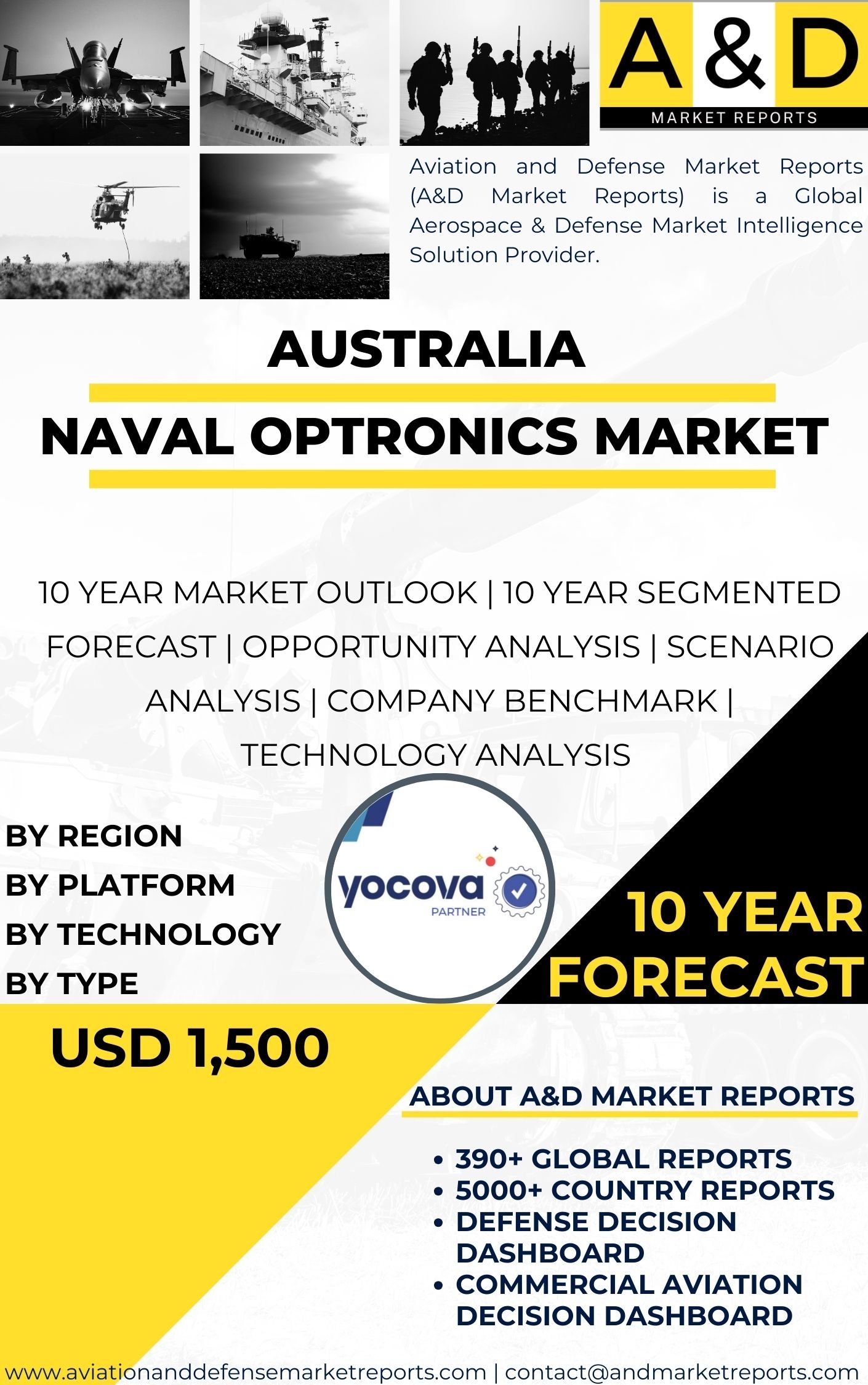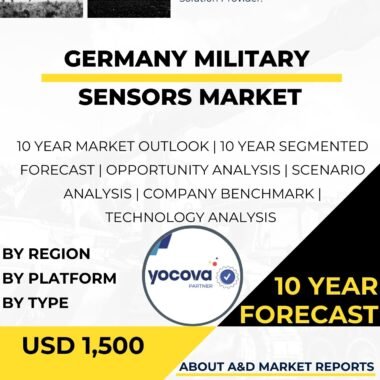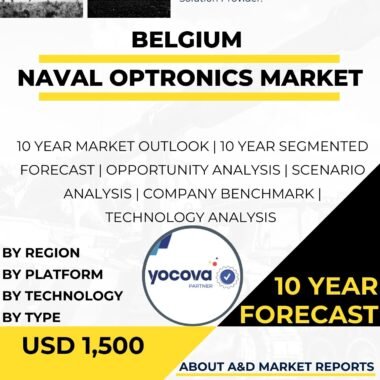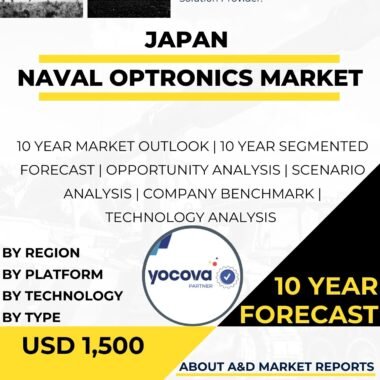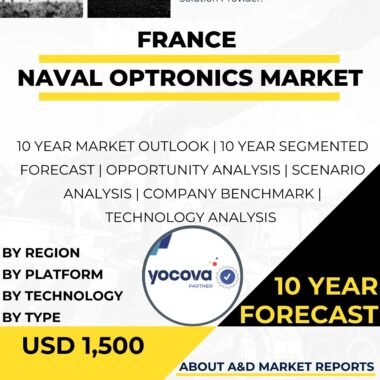Description
The naval optronics market in Australia is witnessing significant development driven by the increasing focus on maritime security and defense modernization. Naval optronics refers to the advanced electro-optical systems used for surveillance, reconnaissance, targeting, and threat detection on naval platforms such as surface vessels, submarines, and unmanned maritime vehicles. These systems integrate optical and electronic technologies to provide enhanced situational awareness and operational capabilities in complex maritime environments.
Australia’s vast maritime domain, including its extensive coastline and strategic position in the Indo-Pacific region, underscores the critical need for advanced naval optronics capabilities. The country’s defense strategy prioritizes modernization of its naval fleet to address emerging threats ranging from conventional military challenges to asymmetric threats like piracy, smuggling, and illegal fishing. This has led to increased investment in sensor-rich platforms equipped with sophisticated optronic suites capable of all-weather, day-night operation.
Electro-optic (EO) and infrared (IR) surveillance systems form the backbone of the naval optronics market. EO/IR sensors enable long-range detection, tracking, and identification of vessels and other targets, providing high-resolution imagery even in reduced visibility conditions. These sensors are crucial for effective maritime domain awareness and force protection. The demand for such systems is rising due to the emphasis on real-time intelligence, surveillance, and reconnaissance (ISR) capabilities for naval operations. Innovations in multispectral imaging, gyro-stabilization, and software-defined video processing enhance sensor performance by delivering clearer visuals and reducing system jitter in rough sea conditions.
Submarines benefit from digital optronic masts that replace traditional periscopes, transmitting high-definition video feeds to operators below deck without compromising hull stealth. This digitalization advances submarine situational awareness while maintaining their covert status. Surface combatants such as destroyers and frigates increasingly deploy multiple stabilized EO/IR directors to support navigation, fire-control, and missile guidance, enabling more accurate and timely responses to threats.
Unmanned maritime platforms, both surface and underwater, are a rapidly growing segment within the Australian naval optronics landscape. Unmanned systems require compact, lightweight, and low-power optronic payloads to fit their smaller hulls and maintain operational endurance. This has spurred research and development into wafer-bonded readout integrated circuits (ROICs), graphene heat spreaders, and lightweight gimbals, which collectively reduce sensor weight and power consumption. The integration of autonomous target classification engines and AI-assisted analytics further enhances the capability of unmanned vessels for missions such as mine countermeasures, anti-submarine warfare, and maritime reconnaissance.
Infrared technology, particularly mid-wave IR (MWIR) and long-wave IR (LWIR), remains a dominant choice due to its superior ability to detect targets beyond the visible light horizon and in adverse weather conditions. While these cooled infrared detectors are costly, their unmatched clarity during night operations and challenging weather makes them indispensable for naval platforms. Laser systems are emerging as another critical technology, used for ranging, target designation, and counter-unmanned aerial system (UAS) applications. These photonics-based technologies are gaining traction owing to their dual-use capabilities and precision.
Coastal defense and maritime law enforcement agencies in Australia are also enhancing their optronic capabilities to monitor illegal activities and secure maritime approaches. While these users have relatively constrained budgets compared to the navy, they benefit from lighter, cost-effective sensor packages and multi-year financing models. The interoperability of their surveillance systems with broader naval command and control architectures creates a force-multiplier effect, enabling coordinated responses to maritime threats.
The competitive landscape in the Australian naval optronics market features key global and domestic players providing end-to-end solutions including sensor hardware, software integration, and through-life support. Leading international companies offer modular, upgradeable architectures that allow firmware updates and algorithm enhancements without costly hardware replacements, future-proofing naval sensors against evolving operational requirements. Suppliers emphasize reliability metrics, such as cryocooler mean-times-between-failures, to minimize costly maintenance and downtime during fleet deployments. Additionally, new entrants and startups focused on AI-driven signal processing, quantum-enhanced navigation, and lightweight laser-warning devices introduce fresh innovation pressures that invigorate the market dynamics.
Australia’s strategic maritime interests and participation in collective security frameworks prompt ongoing naval fleet renewal programs, which not only replace aging platforms but also upgrade sensor suites to meet contemporary threats. This creates a sustained demand pipeline for naval optronics, both for new shipbuilding and retrofitting existing vessels. With geopolitical tensions and maritime domain challenges intensifying in the Indo-Pacific region, Australian naval forces and associated maritime agencies will continue to prioritize optronic technologies that enable superior maritime situational awareness, precision targeting, and autonomous operational capabilities.
In summary, the naval optronics market in Australia is characterized by a growing adoption of advanced EO/IR surveillance systems, digital submarine masts, lightweight sensor payloads for unmanned platforms, and emerging laser technologies. The market is fueled by naval fleet modernization, rising maritime security threats, and the integration of AI and quantum technologies. Key players focus on delivering upgradeable, reliable, and multifunctional sensor solutions that enhance maritime defense and law enforcement effectiveness, ensuring Australia?s naval capabilities remain robust and technologically advanced in a complex security environment.
